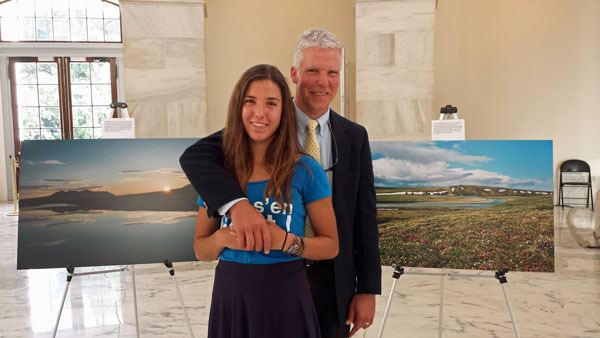Dave Shreffler is a restoration ecologist and photographer. He volunteers his time for wilderness protection, strong schools in Sequim, improved recreational opportunities for children and families in eastern Clallam County and the construction and maintenance of the Olympic Discovery Trail.
He lives in the foothills adjacent to Olympic National Park with his wife Ann Soule and daughter Waverly Shreffler.
“‘Take only pictures, leave only footprints’ has long been the motto of visitors to America’s national parks, wildlife refuges, monuments and wilderness areas. I grew up with this leave no trace philosophy thanks to a childhood spent in Boy Scouts and the lessons learned in wilderness have influenced my life.
I love knowing that the words wild, wilder and wildness are all embedded within wilderness. All are derivatives of the Old English wilde (adj): ‘in the natural state, uncultivated, undomesticated.’
I find it especially telling that Howard Zahniser, the principal author of the 1964 Wilderness Act, wrote that, ‘The essential character of wilderness is wildness.’
I’ve had the good fortune to wander our nation’s spectacular wilderness areas in search of this wildness. My obsession with photography has been guided by a knowingly futile attempt to capture what is sacred to me about wilderness. It is in wilderness that I feel most alive.
In September 2014, I was invited to display my landscape and wildlife photographs from the Western Arctic Reserve (National Petroleum Reserve-Alaska) in the rotunda of the Russell Senate Building. The exhibit was arranged by Alaska Wilderness League and sponsored by several senators to coincide with nationwide celebrations of the 50th Anniversary of the Wilderness Act.
Since 2007, I’ve traveled and photographed in the Western Arctic Reserve on three different trips of a week or longer. The reserve is a vast, roadless landscape of meandering rivers, majestic mountains, clear lakes and mile after mile of tundra. This “American Serengeti” is teeming with life, including the Western Arctic caribou herd (one of the largest in the world), wolves, wolverines and the highest density of grizzly bears north of the Brooks Range. Millions of terrestrial and aquatic birds come from all over the world to breed in the reserve each summer.
After rafting 70 miles of the remote Nigu River in 2010, I remember describing to friends that floating a reserve river is like being in a real life IMAX movie … you just sit there with your jaw dropped as the stunning landscape and wildlife flow by.
I’ve experienced rain squalls, snow, ice, sunshine and double rainbows that spanned the seemingly endless horizon — all in the same day. A wolverine, a wolf, a grizzly and hundreds of caribou have wandered through our camps. I’ve seen the tundra erupt in a riot of wildflowers.
And I’ve been moved to tears watching 24 hours of continuous arctic sun paint the landscape with ever-changing light.
As I installed the exhibit in the rotunda, I was reminded of what President Lyndon Johnson wrote, upon signing the 1964 Wilderness Act:
‘If future generations are to remember us with gratitude rather than contempt, we must leave them something more than the miracles of technology. We must leave them a glimpse of the world as it was in the beginning, not just after we got through with it.’
Wilderness protection is not a Republican ideal or a Democratic ideal; it’s an American ideal. Since 1964, 110 million acres and more than 750 public lands have been federally designated as wilderness areas.
At 22 million acres, the Western Arctic Reserve is the largest unit of public lands in the nation; the reserve is bigger than 12 states and more than 22 times the size of Olympic National Park. None of the reserve is protected as wilderness. I hope to change that.”
Everyone has a story and now they have a place to tell it. Verbatim is a first-person column that introduces you to your neighbors as they relate in their own words some of the difficult, humorous, moving or just plain fun moments in their lives. It’s all part of the Gazette’s commitment as your community newspaper. If you have a story for Verbatim, contact editor Michael Dashiell at editor@sequimgazette.com.



